Setting out on a trek to Everest Base Camp is no small feat — it’s a journey that combines physical challenge, breathtaking scenery, and authentic mountain culture. This 10-day guided trek, offered for around $682 per person, takes you from the bustling airstrip of Lukla through charming Sherpa villages and up into the high Himalayan wilderness, ultimately standing at the foot of the world’s tallest mountain.
What we love most about this trek is how it balances effort and reward. First, the chance to explore villages like Namche Bazaar and Tengboche offers a glimpse into Sherpa life and spiritual culture. Second, the carefully planned acclimatization days, particularly the hikes to Everest View Hotel and Nangkartshang Peak, help you adjust to the altitude — crucial for safety and enjoyment. A potential consideration: the trek is physically demanding, and while the price includes basic accommodations, it’s a journey that requires good fitness and perseverance.
This experience is ideal for those who want a guided, supportive approach to reaching Everest’s doorstep — especially travelers eager to enjoy Himalayan culture while taking on a serious challenge. If you’re looking for an authentic, well-organized trek with a focus on safety and local interaction, this tour may be a perfect fit.
Key Points
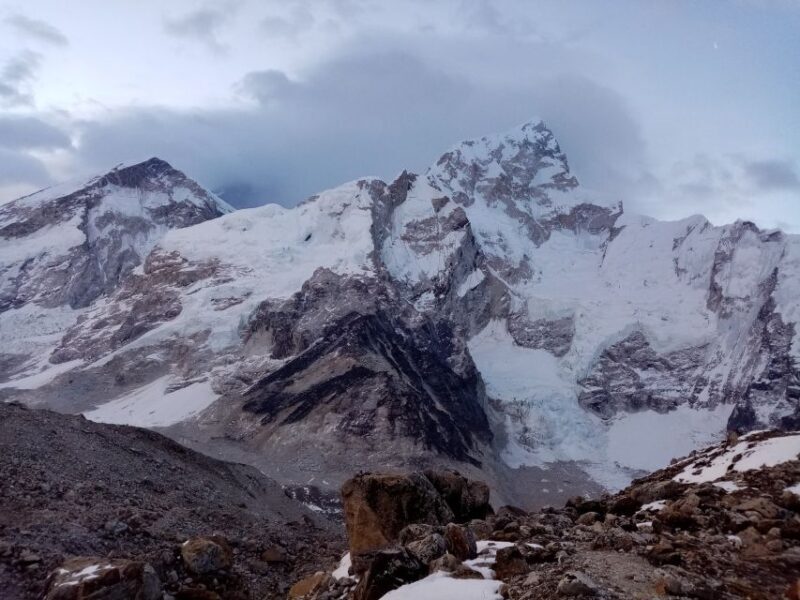
- Balanced Itinerary: Combines trekking, acclimatization, cultural visits, and scenic highlights.
- Inclusive Package: Includes permits, guides, a porter, and basic accommodations.
- Authentic Experience: Explore villages and monasteries, interact with Sherpa culture.
- Physical Challenge: Expect several long days of trekking with altitude gains.
- Flexible Payment: Reserve now, pay later, with free cancellation up to 24 hours in advance.
- Group Size: Private group for a personalized experience.
Detailed Review of the Everest Base Camp Trek from Lukla
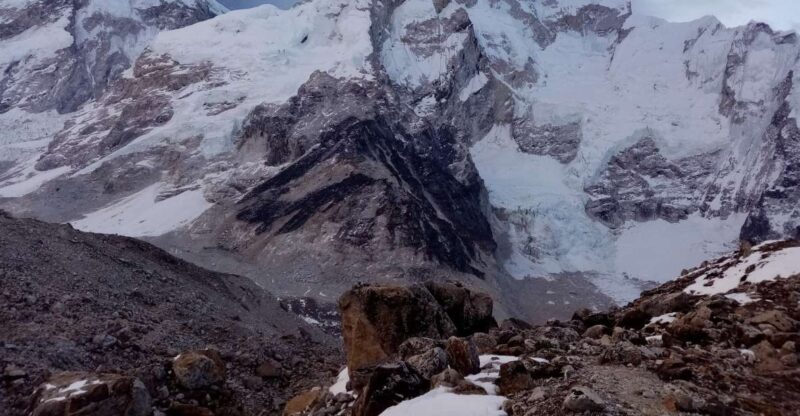
Appreciate having local insight? Here are other guided experiences in Lukla we've examined
Setting Out: From Lukla to Phakding
Your adventure begins in Lukla, a tiny airstrip that feels more like a mountain outpost than an airport. This is where your journey truly starts, and it’s worth noting how the flight itself — often described as “an adventure” — sets the tone for the trip. Once you’re on the ground, your trek kicks off with a relatively gentle walk to Phakding, which takes about 3-4 hours.
This first day introduces you to the Himalayan landscape — lush forests, braided rivers, and the distant peaks. The walk is manageable, letting your body start adjusting and giving you a chance to meet fellow travelers and guides. The basic tea houses here are charming but simple, providing a cozy retreat after your first day of walking.
Ascent to Namche Bazaar
Day 2 is more demanding, with a 5-6 hour trek to Namche Bazaar — the bustling hub of Sherpa culture and a critical acclimatization point. The ascent follows a trail that climbs gradually, offering stunning views of Ama Dablam and Thamserku. The lively market town teems with trekkers from around the world, and you’ll notice the Sherpa hospitality from the moment you arrive.
We loved the vibrant atmosphere of Namche — its teahouses, shops, and the chance to buy warm gear or souvenirs. The town’s altitude (3,440m) makes it an ideal spot for acclimatization, which is essential for your body to adapt before heading higher.
Acclimatization and the Everest View Hotel
Day 3 is an important rest day. Rather than staying still, the guide will typically suggest a short hike to the Everest View Hotel, perched at nearly 3,880 meters. This hike offers a spectacular panorama of Everest, Lhotse, Nuptse, and other giants. It’s a gentle walk, but the views are unforgettable, making it well worth the effort.
We appreciate this built-in acclimatization day — it’s a smart way to help prevent altitude sickness. The return to Namche for the night provides time to explore or relax.
More Great Tours NearbyTrekking to Tengboche
Day 4 takes you from Namche to Tengboche (around 5-6 hours). The trail descends into forests, crosses suspension bridges, and then climbs again, culminating at the famous Tengboche Monastery. Sitting at 3,870 meters, this monastery is a spiritual highlight with its stunning setting and views of Everest and Ama Dablam.
Many reviews mention the peaceful atmosphere here, and the chance to witness monks chanting or participating in prayers. It’s a perfect spot for reflection amid the grandeur of the mountains.
Love the outdoors? Here are other hiking experiences we've covered in Lukla
From Tengboche to Dingboche
Continuing your ascent, Day 5’s trek to Dingboche (about 5-6 hours) climbs through alpine terrain. This village offers a different perspective — high-altitude desert landscapes with panoramic views of the peaks. It’s a vital acclimatization stop, and many travelers comment on how the scenery feels more stark and dramatic at this altitude.
We liked the quiet, open vistas here, a stark contrast to the lush forests below. The small guesthouses are basic but comfortable enough for a good night’s sleep.
Acclimatization at Dingboche
Day 6 is another designated acclimatization day. A popular hike is to Nangkartshang Peak, rising to 5,083 meters. The climb is steep but manageable, and the views from the top are well worth the effort — Everest, Lhotse, and even Makalu come into view.
According to reviews, these days are crucial for safety, and we agree. The ability to ascend gradually and give your body time to adjust can make or break your trip.
The High Altitude Push: Dingboche to Lobuche
Day 7 covers the trek from Dingboche to Lobuche (4,940 meters). The trail becomes more rugged, with fewer trees and more exposed rocky ridges. As you approach Lobuche, the mountain scenery becomes even more dramatic, with close-up views of Cholatse and other peaks.
The Grand Finale: Everest Base Camp and Kala Patthar
Day 8 is the highlight — a full day of trekking to Gorak Shep and the Everest Base Camp (5,364 meters). This is a long, strenuous day (7-8 hours), but reaching Base Camp is a bucket-list moment. The trail is filled with fellow trekkers, and the camp itself is a jumble of tents and climbers preparing for Everest expeditions.
We loved the sense of achievement walking into the base of the world’s tallest mountain. The views of Lhotse and Nuptse from Base Camp are equally stunning.
On Day 9, you’ll get up early to hike to Kala Patthar (5,545 meters), famous for its sunrise views over Everest. It’s often described as the best photo spot of the trip, with panoramic vistas that include Everest’s summit. After the sunrise, you’ll trek down to Pheriche, a vibrant high-altitude village.
Returning and Reflecting
Day 10 involves a descent back to Namche Bazaar, giving you the chance to reflect on your journey and enjoy the mountain scenery one last time. The trek down is often more relaxed but still requires attention to footing at higher elevations.
The Practical Side: What’s Included, What’s Not

This tour provides a comprehensive logistical package: hotel pickup and drop-off, an experienced English-speaking guide, one porter to carry up to 12 kg, and permits and conservation fees. The accommodations are in basic tea houses, which means you get an authentic experience but shouldn’t expect luxury.
Meals are not included, but you can purchase them at each stop, and there are plentiful options for hearty, warming food — essential after a long day of trekking. The cost for rescue in emergencies isn’t included, so travelers should consider travel insurance that covers high-altitude trekking.
Price and Value
At $682, this trek represents a good value considering the inclusions. The guided aspect, permits, and support make it accessible for those without experience organizing Himalayan logistics. The private group setup offers a more personalized experience, which many travelers find worthwhile.
Flexibility and Reservations
The ability to reserve now and pay later, along with free cancellation up to 24 hours before, provides flexibility, especially for those uncertain about travel dates or weather.
Who Is This Trek Best For?
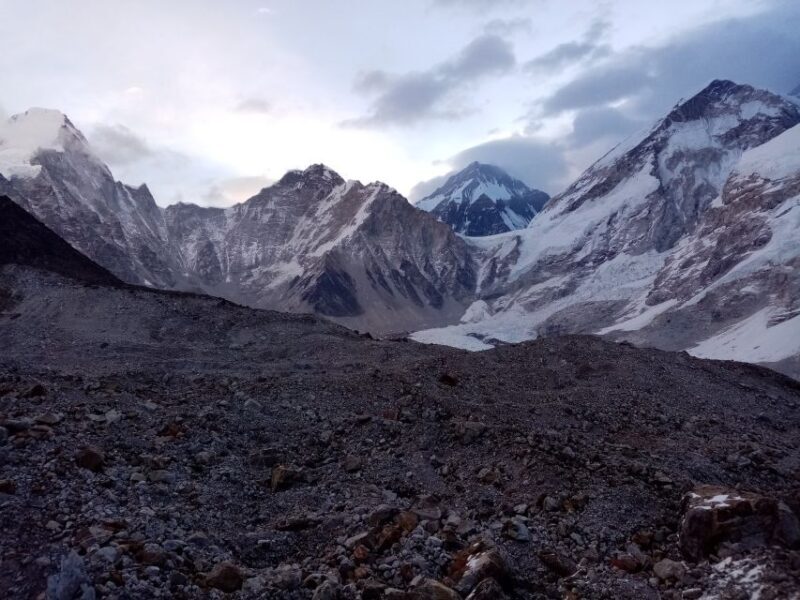
This trek suits adventurous travelers with a reasonable level of fitness who want a guided, supported climb to Everest’s doorstep. It’s ideal for those interested in Sherpa culture, Himalayan scenery, and making the climb with a small group. If you prefer the comfort of a luxury trek or have significant mobility challenges, this may not be the right choice.
Final Thoughts
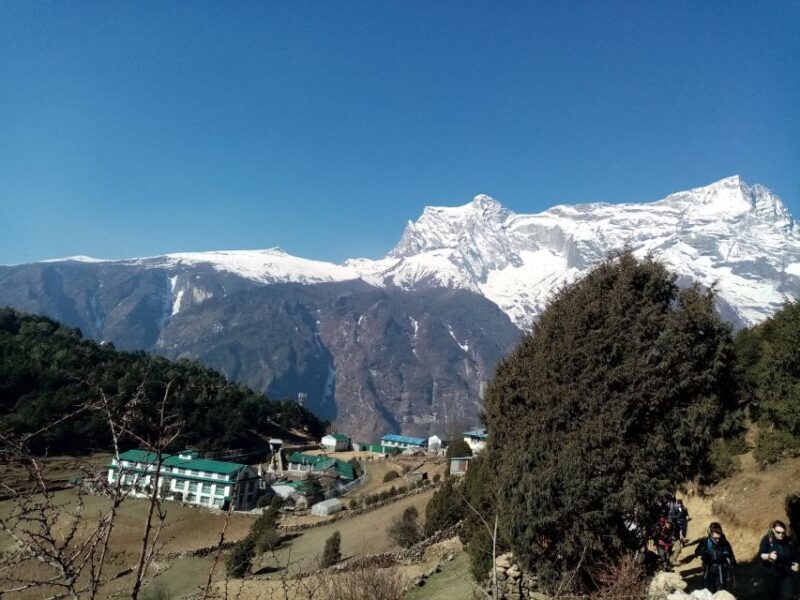
Travelers seeking a well-organized, authentic Himalayan experience that balances physical challenge with cultural richness will find this trek rewarding. It’s not just about reaching Everest’s base but also about experiencing the daily lives of Sherpa communities, the spiritual serenity of monasteries, and the breathtaking sights along the trail.
While it’s physically demanding, the carefully planned acclimatization days and guided support help make it manageable. The basic accommodations keep costs reasonable but require a spirit of adventure and patience.
If you’re prepared for a steady climb and eager to stand at the foot of Everest, this tour offers a comprehensive package at a fair price, capturing the essence of Himalayan trekking while ensuring your safety and comfort.
FAQ
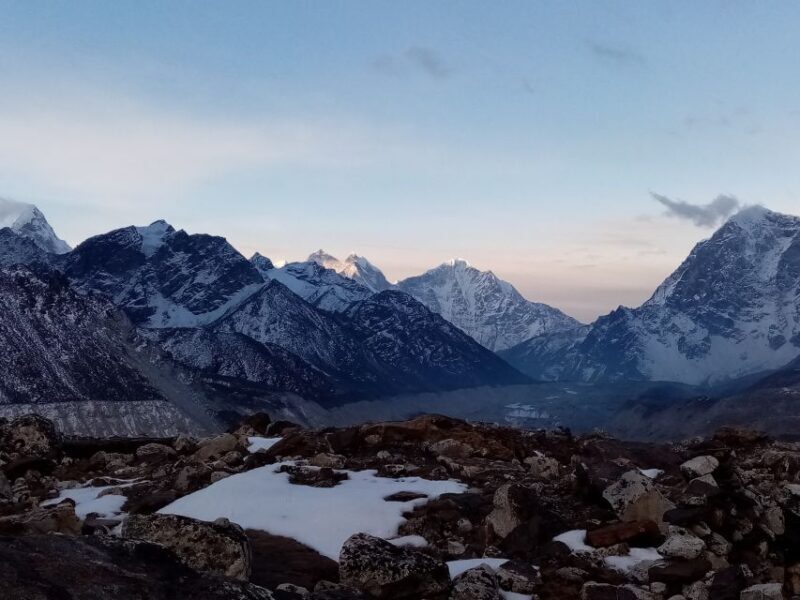
What is included in the tour?
The tour includes hotel pickup and drop-off, an English-speaking guide, one porter (up to 12 kg), trekking permits, and conservation fees. Accommodation in tea houses and permits are covered; meals and rescue costs are not.
How long are the trekking days?
Expect trekking days to last between 3 to 8 hours, depending on the day and altitude gained. The longest day is reaching Everest Base Camp, which combines a full day’s effort with stunning rewards.
Are there acclimatization days?
Yes, the itinerary includes two rest days in Namche Bazaar and Dingboche, featuring hikes to scenic viewpoints like Everest View Hotel and Nangkartshang Peak to help your body adjust.
Is this suitable for beginners?
While not for absolute first-timers, the trek is designed with acclimatization and support in mind. Moderate fitness and a positive attitude are recommended.
What about accommodations?
Basic guest houses or tea houses are used throughout, offering simple but comfortable rooms. Expect communal dining and shared bathrooms.
Can I cancel or reschedule?
Yes, you can cancel up to 24 hours before for a full refund. Reservations are flexible—you can book now and pay later, which helps if your plans are uncertain.
How challenging is the trek physically?
It’s physically demanding due to the long days and high altitude, with climbs reaching over 5,500 meters. Good fitness and acclimatization help ensure a smoother experience.
What is the best time to go?
Though not explicitly stated, trekking seasons generally favor pre-monsoon (spring) and post-monsoon (autumn) for stable weather and clearer views.
What makes this tour unique?
The guided support, inclusion of acclimatization days, visits to culturally rich sites like Tengboche Monastery, and the private group setting distinguish this trek from more impersonal options.
